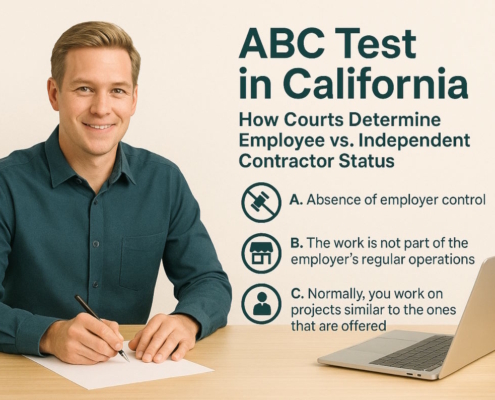1. Assess Your Decision
Evaluate the Reasons for Leaving
When figuring out how to quit a job, it’s essential to first assess the reasons behind your decision. Are you leaving because of career goals, job dissatisfaction, or personal reasons? Reflecting on these motivations can help you determine the best way forward. For instance, if you’re leaving because of limited growth opportunities, you may feel confident in your choice. Alternatively, if you’re considering quitting your job because of temporary stressors, discussing solutions with your manager might be beneficial. This step clarifies if quitting your job is the best path for you.
Consider Alternatives
Before deciding that quitting your job is the only option, consider other paths within the company. This might mean transferring to a different department, adjusting your workload, or working remotely. For example, if you’re feeling burnt out from long hours, a conversation with HR might help you shift to a more balanced role without needing to quit altogether.
Ensure Financial Stability
Planning financially before quitting your job is crucial, especially if you don’t have another position lined up. Many recommend saving three to six months of living expenses before putting in your two weeks’ notice. Ensuring financial readiness is essential, particularly if you decide to quit a job without notice, as it can take time to find a new position.
2. Plan Your Transition
Timing Your Resignation
Strategic timing is important when considering how to put your two weeks in. Try to align your departure with project deadlines or the end of a quarter. If you’re working on a big project that ends in June, planning to leave in July can demonstrate your commitment. Remember, if you’re wondering, “Do you have to give two weeks’ notice?” the answer is often yes, as this is considered standard courtesy.
Job Search Strategy
When thinking about how to quit your job, it’s often best to have another role lined up before resigning. This reduces financial pressure and gives you peace of mind during your transition. Update your resume, strengthen your LinkedIn profile, and reach out to contacts in your network. If you’re thinking, “How do I quit my job without another position lined up?” be prepared to take time to search while managing expenses.
Prepare for Knowledge Transfer
If you’ve decided to quit, preparing for a knowledge transfer helps ensure a smooth transition. Document important tasks, procedures, and contacts so your team can easily follow in your footsteps. For instance, if you handle specific clients, leave notes on key client details and preferences, making it easier for your successor to pick up where you left off.
3. Draft a Professional Resignation Letter: How to Put Your Two Weeks In
Format and Tone
Your resignation letter should be formal and positive. Include essential details such as your intent to resign, last working day, gratitude, and an offer to assist in the transition. For example, a resignation letter might begin with, “I am writing to formally announce my resignation from [Company Name], effective two weeks from today.” If you’re wondering, “Is 2 weeks’ notice required?” most employers do expect it, as it allows time to prepare for your absence.
Example Phrasing On How to Put Your Two Weeks In
If you’re unsure about what to say when quitting a job, here’s an example:
“Dear [Supervisor’s Name],
I am resigning from my position as [Your Position] effective [Last Day, two weeks from today]. I am grateful for the opportunities I’ve had at [Company Name], especially [mention a specific experience or achievement]. I am committed to supporting a smooth transition.”
Common Questions
Do you have to give a 2-week notice? Generally, yes, unless otherwise specified in your contract. How do you put in your two weeks if there’s no formal HR? Discuss it directly with your supervisor or manager.
4. Notify Your Supervisor
Schedule a Face-to-Face Meeting
Instead of sending an email, schedule a personal meeting to tell your supervisor in person. This demonstrates respect and professionalism. If you’re wondering, “How do you quit a job with a manager who’s difficult to approach?” scheduling a meeting allows for a focused conversation without interruption.
Communicate Professionally and Positively
When discussing how to put your two weeks in, it’s important to remain positive. Focus on the value of the experience rather than any grievances. For example, rather than saying, “I’m leaving because of burnout,” you could say, “I’m ready to pursue new challenges.” Keeping the conversation constructive ensures a smoother exit.
Prepare for a Counteroffer
Sometimes, employers will offer more compensation or other benefits to retain valuable employees. If you’re wondering, “Do you have to give a 2-week notice in case of a counteroffer?” the answer depends on your intentions. If your decision to leave is final, it’s best to thank them but politely decline.
5. Wrap Up Your Responsibilities
Complete Key Tasks
If you’re wondering how to quit a job without leaving unfinished work, prioritize current projects and wrap up key responsibilities before your last day. This ensures a smooth transition and leaves a positive impression on your team.
Knowledge Handover
If you’re considering how to put your two weeks in while handling complex projects, be sure to leave a clear record of essential information for your successor. For example, make a checklist of ongoing tasks or important contacts so your responsibilities can continue smoothly after your departure.
Documentation
When considering what to say when quitting a job, you might offer to leave behind organized files or guides. This extra step shows you care about the team’s success even after you leave.
6. Say Goodbye to Colleagues
Inform Your Team
After telling your supervisor, let your team know with a thoughtful message expressing appreciation. If you’re wondering how to quit a job without notice, know that immediate departures may prevent you from saying goodbye personally, so it’s usually best to plan your farewell.
Stay Connected
Maintaining professional connections can be beneficial. Connect with colleagues on LinkedIn, and exchange personal emails if appropriate. Leaving on a good note makes it easier to maintain these valuable relationships.
Depart Gracefully
When quitting a job, avoid negative conversations about the company. Expressing appreciation, even if your experience wasn’t perfect, will help you maintain a positive reputation. If you’re asking yourself, “How do you quit a job while preserving my reputation?” maintaining professionalism until the end is key.
7. Final Steps
Exit Interview
If you’re offered an exit interview, approach it constructively. When asked about your decision, you can give feedback diplomatically. For example, you might say, “I’m leaving because I’d like to pursue new opportunities aligned with my career goals.”
Return Company Property
Before your last day, make sure all company property is returned, including equipment, keys, and IDs. This is an important aspect of quitting a job professionally.
Review Benefits and Final Pay
Check with HR about final pay, any remaining benefits, and options for health coverage. For example, if your company offers health insurance extensions, this may be helpful until benefits from a new role begin.
8. Conclusion
Learning how to quit a job professionally ensures you leave on good terms, maintain positive relationships, and uphold your reputation. While you may wonder, “Do you have to give two weeks’ notice?” it’s almost always recommended, as it shows respect for your employer and helps your team plan for the transition. Following these steps—from drafting your resignation letter to finalizing your exit—will make the process easier and smoother for everyone involved. Ultimately, a respectful exit is an investment in your future career and reputation.































